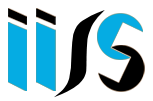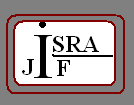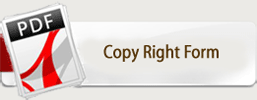International Journal of Pharmacy and Engineering (IJPE)
Instruction to Author
Aims and Scope of the Journal
International Journal of Pharmacy and Engineering (IJPE) presents papers which describe innovative research spanning around the physical, chemical and engineering aspects of pharmaceutical sciences. Papers incorporating the concepts of physical pharmacy, novel biocompatible materials, drug delivery technology and devices as applied in drugs and pharmaceuticals, engineered delivery design, scaling up and pharmaceutical process engineering in addition to tissue engineering and molecular imaging are welcome for publications in this journal. IJPE is a quarterly publication and the target audience and contributors will comprise key personnel from academic, research and pharmaceutical cum related industry. The journal will be a forum for in-depth discussion to promote novel technologies and avant-garde solutions to meet the emerging challenges in the fields of engineering sciences and/or pharmaceuticals.
Current emphasis of the journal will primarily include:
pharmaceutical process and product development
micro/nano scaling of drug candidates or drug carrier systems
regulatory issues pertaining to drug delivery including micro- and nano-drug delivery systems
toxicity evaluation of novel drug delivery based products
pharmaceutical biotechnology
pre-clinical and clinical drug evaluation
pharmaceutical analysis
new drug discovery
research related to various aspects of herbal drugs
nutraceuticals and probiotics
Original research articles that are interdisciplinary in nature and incorporate the disciplines of physical/chemical/engineering sciences interrelated with the disciplines of molecular and human biology are also within the scope of this journal.
Scientific commentaries and review articles are generally by invitation but any proposals are welcome to be submitted to the Editor-in-Chief for prior approval. Proceedings of scientific meetings may be published as special issues or supplements to the Journal. Manuscripts submitted to the Journal are only accepted on the understanding that:
(a) they are subject to editorial review (generally by two independent referees);
(b) they have not been, and will not be, published in whole or in part in any other journal;
(c) the recommended guidelines for the use of experimental animals and human subjects have been adhered to and approved by an appropriate Institutional agency.
International Journal of Pharmacy and Engineering (IJPE) is an open access journal which provides an easy access to the published article, incrementing the citations and thereby increasing impact of your research.
Objective of the Journal
The objective of International Journal of Pharmacy and Engineering is to provide a world class platform in Pharmaceutical and Engineering Sciences. A broad vision of this quarterly journal is to serve as an interface between the pharmaceutical manufacturing aspects in addition to the scaling up technologies.
Editorial Policy: The journal will entertain publications under the following categories
a) original research articles/notes
b) invited reviews (including Mini reviews),
c) editorial commentary and news.
oNormal> new drug discovery
research related to various aspects of herbal drugs
nutraceuticals and probiotics
The superseding criteria for publication include originality, quality and present day significance of the disclosure. Authors are required to furnish sufficient details of the experiments to enable lucid reproduction. The manuscripts must contain original research work and the used data may not be published anywhere else except in academic dissertations and posters. In case some published data is to be incorporated in the manuscript for completeness, it is the responsibility of the authors to take prior permission for the use of the data from the relevant authorities. The authors must make sure that the manuscript completely conforms to the manuscript style.
c) editorial commentary and news.
oNormal> new drug discovery
research related to various aspects of herbal drugs
nutraceuticals and probiotics
Instruction to Author
Preparing a Manuscript
Manuscripts should be prepared as word processing documents on A4, or Letter size paper, leaving a liberal margin (2 cm) on all four sides which should be in single-column format. The manuscript should be typed single-spaced throughout including references and tables. All figures and tables should be in the text. However, do use bold face, italics, subscripts, superscripts etc. When preparing tables, if you are using a table grid, use only one grid for each individual table and not a grid for each row. If no grid is used, use tabs, not spaces, to align columns.
Fonts: Times New Roman and point size should be 12.
Authors should keep their manuscripts as short as they reasonably can. Page numbers should appear in the upper right hand corner of each page, beginning with the title page. The language of manuscript must be simple and explicit. Author’s / Co-author’s name or any other identification should not appear anywhere in the body of the manuscript to facilitate blind review.
We accept manuscript under following categories: Original Research Articles, Review, Short communications, Perspectives (Innovative teaching methods, innovative practice approach, novel models, debates, view points), Invited articles, Case reports and Letter to Editor.
Original Research Articles: It should be arranged into the following sections:
Subdivision - numbered sections:
Divide your article into clearly defined and numbered sections. Subsections should be numbered 1.1 (then 1.1.1, 1.1.2, ...), 1.2, etc. (the abstract is not included in section numbering). Use this numbering also for internal cross-referencing: do not just refer to "the text". Any subsection may be given a brief heading. Each heading should appear on its own separate line.
Title page
It should be paginated as page 1 of the paper. It should carry the title, authors’ names and their affiliations, running title, address for correspondence including e-mail address.
=Title:
Must be informative, specific and short and not exceed 100 characters.
Authors and affiliations:
The names of authors and their appropriate addresses should be given. It should be made clear which address relates to which author.
Address for correspondence:
The corresponding author’s address should be given in the title page. The fax number (if available) may be mentioned. The e-mail ID of the corresponding author or the contact e-mail ID must also be provided.
Abstract and key words
It must start on a new page carrying the following information:
(a) Title (without authors’ names or affiliations),
(b) Abstract body- It should not exceed 250 words excluding the title and the key words. The abstract must be concise, clear and informative rather than indicative. The abstract must be in a structured form consisting of objectives, methods, results and conclusions briefly explaining what was intended, done, observed and concluded. Authors should state the main conclusions clearly and not in vague statements. The conclusions and recommendations not found in the text of the article should not be given in the abstract.
(c) Key words- Provide 3-5 keywords which will help readers or indexing agencies in cross-indexing the study. The words found in title need not be given as key words.
Introduction
(All headings Lowercase and bold. Reference numbers1-3 to appear as superscript), (Times New Roman 12 font size)
It should start on a new page. Essentially this section must introduce the subject and briefly say how the idea for research originated. Give a concise background of the study. Do not review literature extensively but provide the most recent work that has a direct bearing on the subject. Justification for research aims and objectives must be clearly mentioned without any ambiguity. The purpose of the study should be stated at the end. It should not exceed 500 words.
Material and Methods
(All sub-headings Lowercase and bold. Reference numbers should appear as superscript), (Times New Roman 12 font size)
This section should deal with the materials used and the methodology - how the work was carried out. The procedure adopted should be described in sufficient detail to allow the study to be interpreted and repeated by the readers, if necessary. The number of subjects, the number of groups studied, the study design, sources of drugs with dosage regimen or instruments used, statistical methods and ethical aspects must be mentioned under the section. The methodology - the data collection procedure - must be described in sufficient detail. If a procedure is a commonly used one, giving a reference (previously published) would suffice. If a method is not well known (though previously published) it is better to describe it briefly. Give explicit descriptions of modifications or new methods so that the readers can judge their accuracy, reproducibility and reliability.
The nomenclature, the source of material and equipment used, with details of the manufacturers in parentheses, should be clearly mentioned. Drugs and chemicals should be precisely identified using their non-proprietary names or generic names. If necessary, the proprietary or commercial name may be inserted once in parentheses. In case of pharmaceuticals, the first letter of the drug name should be small for generic name (e.g., dipyridamole, propranolol) but capitalized for proprietary names (e.g., Persantin, Inderal). The routes of administration may be abbreviated, e.g., intraarterial (i.a.), intracerebroventricular (i.c.v.), intra-gastric lavage (i.g.), intramuscular (i.m.), intraperitoneal (i.p.), intravenous (i.v.), per os (p.o.), subcutaneous (s.c.), transdermal (t.d.).
Statistical Methods
The details of statistical tests used and the level of significance should be stated. If more than one test is used it is important to indicate which groups and parameters have been subjected to which test.
Results
(All sub-headings Lowercase and bold. Reference numbers should appear as superscript), (Times New Roman 12 font size)
The results should be stated concisely without comments. It should be presented in logical sequence in the text with appropriate reference to tables and/or figures. The data given in tables or figures should not be repeated in the text. The same data should not be presented in both tabular and graphic forms. Simple data may be given in the text itself instead of figures or tables. Avoid discussions and conclusions in the results section.
Discussion
(All sub-headings Lowercase and bold. Reference numbers should appear as superscript), (Times New Roman 12 font size)
This section should deal with the interpretation, rather than recapitulation of results. It is important to discuss the new and significant observations in the light of previous work. Discuss also the weaknesses or pitfalls in the study. New hypotheses or recommendations can be put forth. Avoid unqualified statements and conclusions not completely supported by the data. Repetition of information given under Introduction and Results should be avoided. Conclusions must be drawn considering the strengths and weaknesses of the study. They must be conveyed in the last paragraph under Discussion. Make sure conclusions drawn should tally with the objectives stated under Introduction.
Acknowledgements
It should be typed in a new page. Acknowledge only persons who have contributed to the scientific content or provided technical support. Sources of financial support should be mentioned.
Equations
Equations All equations should be typewritten and the numbers for displayed equations should be placed in parentheses at the right margin. References to equations should use the form ‘’Eq. (3)’’ or simply ‘’(3).’’
References
References must be quoted in the text in square brackets, i.e., [1], [1,2], or [2, p. 51], and grouped at the end of the paper in numerical order of appearance. Abbreviations of journal titles should follow those given in the World List of Scientific Periodicals (latest edition). References should be arranged as follows:
Journal articles: 1. O. Rojo and R. Soto, New conditions for the additive inverse eigenvalue problem for matrices, Computers Math. Applic.23 (11) 41-46 (1992).
Papers in a collection: 2. G.M. Nielson, Coordinate free scattered data interpolations, In Topics in Multivariate Approximation, (Edited by L.L. Schumaker et al.), pp. 175-184, Academic Press, New York, (1987).
Books: 3. R.A. Adams, Sobolev Spaces,Academic Press, New York (1975).
Footnotes In text, footnotes should be avoided.
Tables
Table Number tables consecutively with Arabic numerals in order of appearance in the text. Type each table double-spaced on a separate page with a short descriptive title directly above and essential footnotes below. Authors should submit complex tables as camera-ready copy.
Figures
Figures should be in a finished form suitable for publication. Number figures with Arabic numerals, and indicate the top and the authors on the back of each figure. Lettering on drawings should be professional quality or generated by high-resolution computer graphics and must be large enough to withstand appropriate reduction for publication. Figures should not be embedded in the text. Digital artwork of at least 300 dpi resolution is accepted in EPS format.
Equations All equations should be typewritten and the numbers for displayed equations should be placed in parentheses at the right margin. References to equations should use the form ‘’Eq. (3)’’ or simply ‘’(3).’’
Letter to the Editor
A letter can have a maximum of 800 words (including a maximum of 4 references) with one simple figure or table. The manuscript should not have sub-sections.
Manuscript
Since it is an open access journal and not funded by any agency, there is a minimum fee for publication to cover the various expenditures involved.
For further details please contact with at gmukhopadhyay8@gmail.com
Further Notes
All papers will be refereed. If necessary, the author(s) will be asked to revise the manuscripts according to the referee’s suggestions. The Editorial Committee reserves the right to make reasonable modifications in wording.
Papers are accepted with the understanding that the same work has not been published and that it is not being submitted for publication elsewhere. When a paper has been accepted for publication, the author(s) will be required to sign a Copyright Transfer Agreement for the paper.
Submission of manuscript
Authors should submit (Microsoft word doc) of the manuscript through gmukhopadhyay8@gmail.com/ managingeditor@abhipublications.org /. Accepted papers will be acknowledged and processed further, if the papers are rejected, the decision will be communicated to the corresponding author but the manuscripts will not be returned. Acceptance or rejection of the manuscript would be decided after the decision of editorial team. Acceptance or rejection of the manuscript for publication in journal would be informed to corresponding author shortly from the date of submission.
For further details please contact with at gmukhopadhyay@8gmail.com
Letter to the Editor A letter can have a maximum of 800 words (including a maximum of 4 references) with one simple figure or table. The manuscript should not have sub-sections. Manuscript Charges Since it is an open access journal and not funded by any agency, there is a minimum fee for publication to cover the various expenditures involved. Each accepted paper is required to pay the Publication charge of Rs. 1500 (for Indian) or $ 100 (for foreign) per manuscript before the accepted paper is published. For further details please contact with Editor at gmukhopadhyay8@gmail.com / managingeditor@abhipublications.org Further Notes All papers will be refereed. If necessary, the author(s) will be asked to revise the manuscripts according to the referee’s suggestions. The Editorial Committee reserves the right to make reasonable modifications in wording. Papers are accepted with the understanding that the same work has not been published and that it is not being submitted for publication elsewhere. When a paper has been accepted for publication, the author(s) will be required to sign a Copyright Transfer Agreement for the paper.




